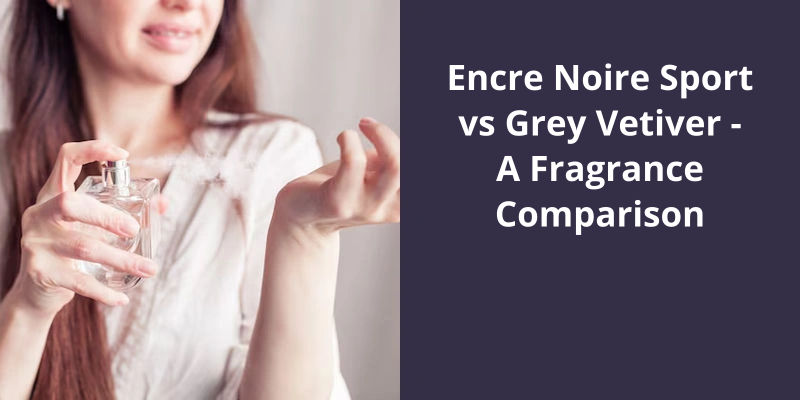Yes, Santal 33 does have a noticeable leather scent. This popular fragrance by Le Labo is famous for its unique and complex aroma, which combines spicy, woody, and floral notes with the distinct richness of leather. It’s this leather undertone that people often perceive as dominant, describing the scent as akin to old leather books or a worn-in, leather jacket. However, it’s important to note that individual sense of smell can vary, meaning what one person discerns as a prevalent leather scent, another may interpret differently.

What Does Leathery Perfume Smell Like?
Leather has always been associated with luxury and opulence, and perfumers have been using it’s scent to add depth and richness to fragrances for centuries. The smell of leather, whether new or old, evokes different emotions in people – some find it comforting, while others might find it overwhelming. But one thing is for sure, the scent of leather is definitely unique.
Leather perfumes come in various forms, from the dark and intense to the light and delicate. The darker perfumes are usually a bit smokier and almost burnt, with notes like birch tar that give them a woody and slightly bitter edge. These perfumes might also contain animalic notes, such as castoreum or musk, which add to the complexity and depth of the fragrance.
In contrast, the softer suede feel is expressed through warm wood, amber, and almond notes that give an overall sweetness to the perfume. These notes are often combined with floral and fruity notes to create a more feminine and delicate scent. Leather perfumes are also sometimes infused with spicy and woody notes that give them a more masculine edge.
Traces of tobacco and tar can also be found in some leather perfumes, giving them a more robust and smoky character. These notes are often combined with spices like cinnamon or clove to create a warm, comforting sensation.
Leather perfumes are extremely versatile and can be worn in any season. They pair exceptionally well with fall and winter wardrobes, especially those made of wool and cashmere. However, they can also be paired with lighter fabrics and worn in the spring and summer.
History of Leather in Perfumery: When and How Was Leather First Used in Fragrances?
Leather has been used in perfumery for centuries, with the first recorded use dating back to ancient Egypt. It was also popular during the Middle Ages and Renaissance era, where it was used to mask unpleasant scents. The leather note is achieved through the use of various botanical ingredients such as castoreum, birch tar, and labdanum.
While leather remains a timeless scent, it’s interesting to discover how other elements can also evoke a leathery aroma. Birch tar, juniper, aldehydes, patchouli, black tea, and tobacco are just a few examples of scents that can inspire the same feeling as leather. Whether natural or synthetic, these smells have the power to transport us to a world of sophistication and elegance.
What Else Smells Like Leather?
The smell of leather is one of the most iconic and recognizable scents in the world. The fragrance has been used in various industries, from fashion and furniture to automobiles and aviation. It’s widely known for it’s rich and elegant aroma, which is often associated with luxury and sophistication. But what if you come across something that smells like leather, but it’s not made out of leather?
Birch tar is one such substance that’s a leathery, smoky scent, resembling that of leather. Birch tar is a dark, viscous liquid extracted from the bark of birch trees. It’s been used for centuries in traditional medicine and as a flavoring agent. It’s often used in leather fragrances to impart a more authentic leather-like scent.
Apart from birch tar, synthetic fragrances are also used in perfumes and colognes to create a leather-like aroma. Aldehydes, for instance, are a group of synthetic fragrances that mimic the scent of leather. Juniper is another common ingredient in perfumes and colognes that are employed to create a leather-like smell.
Leather fragrances aren’t limited to just the fashion industry. They’re also widely used in home décor and furniture. One such example is black tea, which has a woody aroma similar to that of leather. In fact, black tea has become a popular ingredient in home fragrances that give off a cozy and welcoming atmosphere. Tobacco is another ingredient that’s often used in scented candles, diffusers, and other home fragrances, imparting hints of leather-like aroma.
Another prominent ingredient in leather-like fragrances is patchouli. This dark, pungent oil is extracted from the leaves of the patchouli plant and has a musky, earthy scent that’s similar to that of leather.
If you’re someone who loves the smell of leather but doesn’t want to use products made from animal materials, there are plenty of alternative scents available. One such scent is labdanum, a resin that can create a fragrance note that’s similar to leather. Laden with warm, musky, and slightly sweet notes, labdanum is increasingly becoming a popular choice for those looking for an animal-friendly alternative to leather.
What Scent Is Similar to Leather?
When we think of leather, we often imagine it’s distinct and unmistakable scent. The smell is both inviting and powerful, with a rich, earthy aroma that’s hard to replicate. However, there’s one fragrance note that comes close to capturing the essence of leather – labdanum.
Labdanum is a resin that’s extracted from the rockrose plant, also known as Cistus ladanifer. The resin has a warm, musky, and slightly sweet fragrance. When used in perfumes, labdanum creates a rich, complex aroma that’s both sultry and sophisticated. It’s depth and complexity make it a favorite among perfumers and fragrance enthusiasts alike.
One of the reasons labdanum is so similar to leather is that both materials share common terpenes. Terpenes are organic compounds found in many plants and are responsible for giving them their characteristic scents. In both labdanum and leather, the presence of terpenes such as caryophyllene, limonene, and pinene contribute to the similar fragrance profiles.
Combined with other notes like birch tar, oud, or saffron, perfumers can create a range of leather-inspired fragrances that capture the essence of the material.
It’s terpenes and ability to evoke feelings of warmth and intimacy make it a popular choice among perfumers looking to create leather-inspired scents.
Techniques for Creating Leather-Inspired Fragrances Beyond Labdanum.
Innovative ways of making scents that evoke the textures and aromas of leather without relying solely on labdanum.
Conclusion
With it’s woody and leathery notes, this perfume exudes a rich and sophisticated aroma that isn’t overpowering. It’s perfect for those who want to smell luxurious without being too heavy. It’s light and fresh finish make it an ideal fragrance for any occasion. It’s no wonder that this fragrance has become so popular and highly sought after among perfume lovers all over the world.





